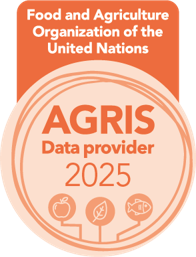Phytoplankton and epipelic algal abundance in relation to bridge construction on Okpoka River in the Upper Bonny Estuary, Nigeria
Abstract
The objective of this study was to determine the impact of bridge construction on abundance and composition of phytoplankton and epipelic algae with respect to bridge construction on a section (ATC Okrika Axis) of Okpoka River, upper Bonny estuary in Nigeria. Phytoplankton and epipelic algae were collected in five replicates from six stations (UA – upstream, BA – bridge position, DA – downstream of bridge (reclaimed side) and (UC – upstream, BC – bridge position, DC downstream of bridge (vegetated side -mangrove) side of the river between January and March 2017. Thirty samples were collected per month with appropriate containers, preserved in 5% formalin-water mixture, taken to the laboratory and identified to the lowest possible taxonomic level. Ten species of phytoplankton (Gyrosigma spp., Synedra spp., Navicula spp., Nitzschia spp., Thalassiothrix spp., Coscinodiscus spp., Fragillaria spp., Pleurosigma spp., Cyclotella spp. and Rhizosolenia spp.) all belonging to the Baccillariophyceae (diatoms) were observed. Ten species (Gyrosigma spp., Navicula spp., Synedra spp., Nitzschia spp., Thalassiothrix spp., Coscinodiscus spp., Fragillaria spp., Pleurosigma spp., Cymbella spp. and Cocconeis spp.) of epipelic algae were also observed with the last two species in each group accounting for their differences. Cyclotella and Rhizosolema spp. were observed only on phytoplankton sampled and Cymbella and Cocconeis spp. were observed in epipelic algal samples suggesting minimal differences in composition. Analysis of variance indicated significant difference (P<0.05) in the abundance of both phytoplankton and epipelic algae between stations close to bridge construction compared to others sites farther away. The study therefore, concluded that activities of bridge construction across the Okpoka River impacted on the abundance and composition of phytoplankton and epipelic within the study area. Regular monitoring is recommended particularly after construction in order to detect recovery changes of these important aquatic algae that form the base of the food chain.
Keywords:
Bonny estuary, Bridge construction, Epipelic algae, Okpoka River, PhytoplanktonDownloads
Published
How to Cite
Issue
Section
Copyright (c) 2020 Agriculture and Environmental Science Academy

This work is licensed under a Creative Commons Attribution-NonCommercial 4.0 International License.

